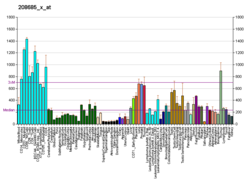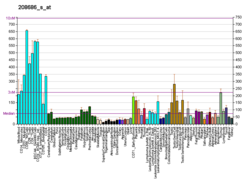| BRD2 | |||||||||||||||||||||||||||||||||||||||||||||||||||
|---|---|---|---|---|---|---|---|---|---|---|---|---|---|---|---|---|---|---|---|---|---|---|---|---|---|---|---|---|---|---|---|---|---|---|---|---|---|---|---|---|---|---|---|---|---|---|---|---|---|---|---|
 | |||||||||||||||||||||||||||||||||||||||||||||||||||
| |||||||||||||||||||||||||||||||||||||||||||||||||||
| Identifiers | |||||||||||||||||||||||||||||||||||||||||||||||||||
| Aliases | BRD2, D6S113E, FSH, FSRG1, NAT, RING3, RNF3, O27.1.1, bromodomain containing 2, BRD2-IT1 | ||||||||||||||||||||||||||||||||||||||||||||||||||
| External IDs | OMIM: 601540; MGI: 99495; HomoloGene: 74540; GeneCards: BRD2; OMA:BRD2 - orthologs | ||||||||||||||||||||||||||||||||||||||||||||||||||
| |||||||||||||||||||||||||||||||||||||||||||||||||||
| |||||||||||||||||||||||||||||||||||||||||||||||||||
| |||||||||||||||||||||||||||||||||||||||||||||||||||
| |||||||||||||||||||||||||||||||||||||||||||||||||||
| |||||||||||||||||||||||||||||||||||||||||||||||||||
| Wikidata | |||||||||||||||||||||||||||||||||||||||||||||||||||
| |||||||||||||||||||||||||||||||||||||||||||||||||||
Bromodomain-containing protein 2 is a protein that in humans is encoded by the BRD2 gene. BRD2 is part of the Bromodomain and Extra-Terminal motif (BET) protein family that also contains BRD3, BRD4, and BRDT in mammals [5][6][7]
Early descriptions demonstrated that BRD2 gene product is a mitogen-activated kinase which localizes to the nucleus. The gene maps to the major histocompatibility complex (MHC) class II region on chromosome 6p21.3 but sequence comparison suggests that the protein is not involved in the immune response. Homology to the Drosophila gene female sterile homeotic suggests that this human gene may be part of a signal transduction pathway involved in growth control.[7]
- ^ a b c ENSG00000234507, ENSG00000230678, ENSG00000204256, ENSG00000235307, ENSG00000236227, ENSG00000234704 GRCh38: Ensembl release 89: ENSG00000215077, ENSG00000234507, ENSG00000230678, ENSG00000204256, ENSG00000235307, ENSG00000236227, ENSG00000234704 – Ensembl, May 2017
- ^ a b c GRCm38: Ensembl release 89: ENSMUSG00000024335 – Ensembl, May 2017
- ^ "Human PubMed Reference:". National Center for Biotechnology Information, U.S. National Library of Medicine.
- ^ "Mouse PubMed Reference:". National Center for Biotechnology Information, U.S. National Library of Medicine.
- ^ Belkina, A. C.; Denis, G. V. (2012). "BET domain co-regulators in obesity, inflammation and cancer". Nature Reviews Cancer. 12 (7): 465–77. doi:10.1038/nrc3256. PMC 3934568. PMID 22722403.
- ^ Thorpe KL, Abdulla S, Kaufman J, Trowsdale J, Beck S (October 1996). "Phylogeny and structure of the RING3 gene". Immunogenetics. 44 (5): 391–6. doi:10.1007/BF02602785. PMID 8781126. S2CID 44613743.
- ^ a b "BRD2 bromodomain containing 2 [ Homo sapiens (human) ]".






